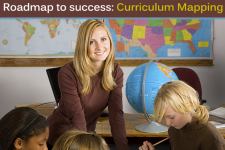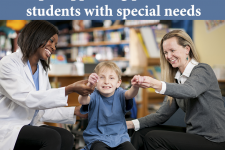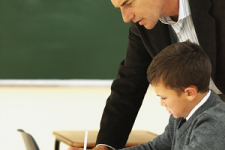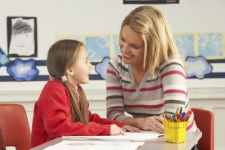How Can Teachers Ensure That Standard-based Curriculum Will Contribute to Higher Achievement?

Use curriculum mapping to align instruction with desired goals and outcomes, to enhance student learning…
Plotting the scope and sequence or curriculum mapping is a process for collecting and recording curriculum-related data that identifies core skills and content taught, processes employed, and assessments used for each subject area and grade level. Consequently, it […]
How Can Teachers Effectively Support Parents Of Students With Special Needs?

Helping special parents understand what you are doing in the classroom and as a school for their child, will help build trust…
Partnership is time consuming and needs commitment both emotionally and mentally. In order to work, there needs to be a relationship between the teacher and the parent. Without a bond and an […]
SELF-STUDY: Action Research for School Improvement (5 hours)
“Find real solutions to everyday problems.”
Research often conjures up a picture in people’s minds of academics working in isolation for years proving theories. To make a distinction from academic research, those involved in action research participate in ongoing testing and monitoring of improvements in their practice. This course […]
SELF-STUDY: Project Management for Students through Project-based Learning (5 hours)
“Explore project-based learning as a successful way to develop project management skills in your students.”
Project management encompasses a range of skills that are highly prized in the world today and include – research, collaboration, communication, leadership, problem-solving and cooperation. For the education system to truly fulfill its purpose of […]
Reading: What Do You Already Know?

To better understand how reading skills are built on prior knowledge and experience, consider this metaphor: Our brain acts like a file cabinet.
The brain food we receive as babies gives us words that we use to communicate. This is what makes each of us unique. As our brain makes more and more connections […]
Being Transparent

The classroom is a highly competitive place where a lot of children compete for our attention. Given the very nature of their development, it is easy for children to misunderstand what a teacher is doing and wrongly believe that perhaps a teacher even favors a particular student. In situations like these, it becomes […]
How do I Communicate with Different Types of Learners in the Classroom?

When a teacher wants to convey a message, he or she may do so by customizing the statement to a student’s learning strength.
Below are typical classroom interactions. Notice how the messages are tailored toward the different types of learners in the classroom.
Teacher
to
Student
TYPES of STUDENTS
Visual
Auditory
Kinesthetic
I understand you.
I see what you are saying.
I […]
What We Say When We’re not Speaking

Did you know that 90% of human communication is non-verbal? Our bodies say so much about us- our clothes, styles, expressions and gestures often communicate a lot more than what we are aware of. As teachers and leaders, we often spend time thinking about “what” to say. We should pay the same attention […]




